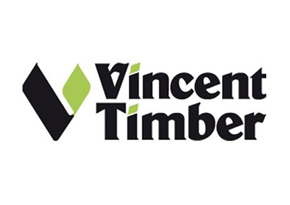24 October 2017
In-depth guidance on CLT for designers

TRADA’s new publication, Cross-laminated timber: Design and performance, an authoritative guide to CLT, enjoyed rave reviews at this year’s Timber Expo at the NEC Birmingham.
Written with the support of several leading players in the construction industry, it provides in-depth guidance on CLT for designers. TRADA’s new book draws on the expertise of several pioneering members, including: Waugh Thistleton, Ramboll, Eurban, Arup, Hugh Strange Architects, KLH UK, B&K Structures and Stora Enso.
CLT consists of boards laminated in two perpendicular directions to create jumbo plywood-like sheets, with increased strength and stability. Its ability to be manufactured offsite like a giant piece of flat-pack furniture, then easily transported, craned and assembled is just one of the reasons why designers and contractors are choosing to use it in place of concrete.
Headlining a conference session at Timber Expo entitled CLT: Simplifying the Complicated, Andrew Lawrence, Associate Director of Arup, attracted audiences. He said: “This is exactly the right time for TRADA to publish a book on CLT. Where we are now with CLT is where reinforced concrete was in the 1930s, when there were many different proprietary systems. CLT provides enormous potential for timber engineering, as well as society, but needs standardisation in order to reduce costs and penetrate the market”.
Lawrence urged the construction industry to use cross-laminated timber to build more offices, hospitals, schools and multi-storey buildings. He said: “The reason timber construction has really taken off is down to three factors: CNC fabrication, the invention of cross-laminated timber and the introduction of cheap modern self-tapping screws. This allows manufacturing to be incredibly accurate, allowing structures to go together ‘like a piece of IKEA furniture but on a much larger scale’”.
Using examples including Waugh Thistleton’s iconic Stadthaus in Hackney, Lawrence pointed out the advantages of building with timber in busy cities like London. He said: “The construction site is quieter without the heavy plant required to pump concrete and install steel supports. There is also less construction traffic – with timber there are six times fewer lorry deliveries to the site. The speed of the build means clients can sell or start renting their building sooner and as timber is a sustainable material, it is often easier to get planning permission”.
Andrew Waugh at Waugh Thistleton Architects, who assisted with the development of the book, comments: “The first time we built in CLT I was amazed. I stood and watched this perfectly pre-crafted building slot together in a matter of hours”.
He and timber engineering expert Andrew Lawrence, as well as other leading lights in architecture, engineering, contracting and manufacturing, have generously shared their knowledge as expert contributors to enable TRADA to publish.
Highly illustrated with photographs and technical drawings, this book demonstrates the versatility of CLT construction as an engineered timber solution, sometimes also used in conjunction with glued laminated timber beams. It provides clear and helpful recommendations to assist architects, engineers and their clients who are increasingly looking for sustainable, efficient structural solutions.
TRADA’s Rupert Scott said: “There is a perception that building with timber is more expensive than concrete and steel but that is not the case. That is why TRADA has published books such as Cross-laminated timber: Design and performance and the National Structural Timber Specification for Building Construction (NSTS), which help companies to ‘cost up’ a timber building from the outset.
“There is a need for CLT to become recognised as a mainstream construction material alongside concrete and steel, and for this ground-breaking product to be considered as a choice, not as an alternative.”
CLT was also a strong theme at Timber Expo’s Stretching Wood and Funky Wood seminar sessions.
Jim Heverin of Zaha Hadid Architects provided a fascinating insight into CLT in its design of the first timber football stadium, while Darron Haylock of Foster & Partners explained how timber was used to bring comfort and hope to cancer sufferers in its design for Maggie’s at the Robert Parfett Building in Manchester. Steven Wallis of dRMM explained the key role CLT played in restoring Hastings Pier to its former glory.
| Cross-laminated timber: Design and performance is available to buy at the TRADA Bookshop.
TRADA member discount of 35% applies. A PDF ‘taster’ copy can be downloaded free. |
























